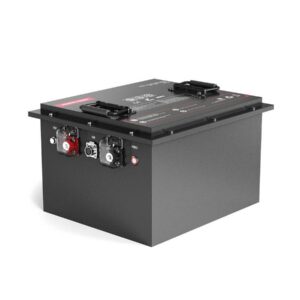
Can you use a lithium battery in place of a regular battery?
Lithium batteries can replace regular alkaline or lead-acid batteries in specific applications if voltage compatibility, physical dimensions, and device requirements align. However, lithium-ion (Li-ion) variants require dedicated charging systems and protection circuits, unlike disposable alkaline batteries. For example, replacing AA alkaline cells (1.5V) with 3.7V lithium counterparts risks damaging devices unless voltage regulators are added. Pro Tip: Always verify a device’s input voltage range—using lithium batteries in 12V systems often requires reconfigured 3S LiFePO4 packs (9.6–12.8V) to avoid overvoltage.
What Is the Best Battery for a Diesel Pickup Truck?
What are the key differences between lithium and regular batteries?

Lithium batteries offer higher energy density (150–250 Wh/kg vs. 30–50 Wh/kg for alkaline) and rechargeability, while standard batteries provide lower cost and simpler disposal. Lithium variants maintain stable voltage during discharge, unlike alkaline cells that gradually lose power. For instance, a 18650 Li-ion cell delivers 3.7V consistently until depletion, whereas a AA alkaline drops from 1.5V to 1.0V. Practically speaking, this makes lithium ideal for high-drain devices like drones but overkill for low-power remotes.
When is lithium battery substitution unsafe?
Substitution becomes hazardous when voltage thresholds or thermal management requirements are ignored. Lithium batteries in legacy lead-acid systems (e.g., 6V motorcycle batteries) risk explosive hydrogen gas formation during charging. A real-world example: Using unprotected LiPo packs in smoke detectors designed for 9V alkaline may bypass critical low-voltage warnings. Pro Tip: Check for built-in battery management systems (BMS) before retrofitting lithium into non-compliant devices.
| Scenario | Safe | Unsafe |
|---|---|---|
| 12V car audio | LiFePO4 with BMS | Raw Li-ion cells |
| Emergency lighting | Primary lithium | Rechargeable lithium |
How do charging requirements differ?
Lithium batteries demand constant-current/constant-voltage (CC-CV) charging with precise voltage cutoffs (±1%), whereas alkaline/NiMH use simpler trickle methods. For example, charging a 3.7V Li-ion cell requires stopping at 4.2V—exceeding this by 0.5V increases fire risk by 400%. Transitioning from regular to lithium batteries? You’ll need smart chargers with lithium-specific profiles. Ever wondered why laptop chargers are bulkier than phone chargers? They incorporate multi-stage lithium charging circuits.
What physical modifications enable lithium replacements?
Successful swaps often require spacers to adjust for size differences (e.g., 18650 vs. C-cell) and voltage regulators to bridge gaps. In solar garden lights, adding a diode to reduce 3.7V Li-ion output to 3V prevents LED burnout. However, modifying sealed devices like pacemakers violates safety certifications—always consult OEM guidelines. Pro Tip: Use PVC shrink tubing to adapt cylindrical lithium cells to rectangular battery compartments securely.
| Component | Alkaline System | Lithium Adaptation |
|---|---|---|
| Voltage | 1.5V/cell | 3.2–3.7V/cell |
| Termination | Spring contacts | Spot-welded tabs |
Battery Expert Insight
FAQs
Can I use lithium AA batteries in my TV remote?Only if labeled “1.5V lithium primary”—standard 3.7V Li-ion AA will fry circuitry. Look for lithium-iron disulfide (Li-FeS₂) chemistry.
Are lithium car batteries drop-in replacements?
LiFePO4 AGM replacements exist but require alternator voltage adjustments (14.4V max). Without modification, conventional 14.8V charging degrades lithium cells.
